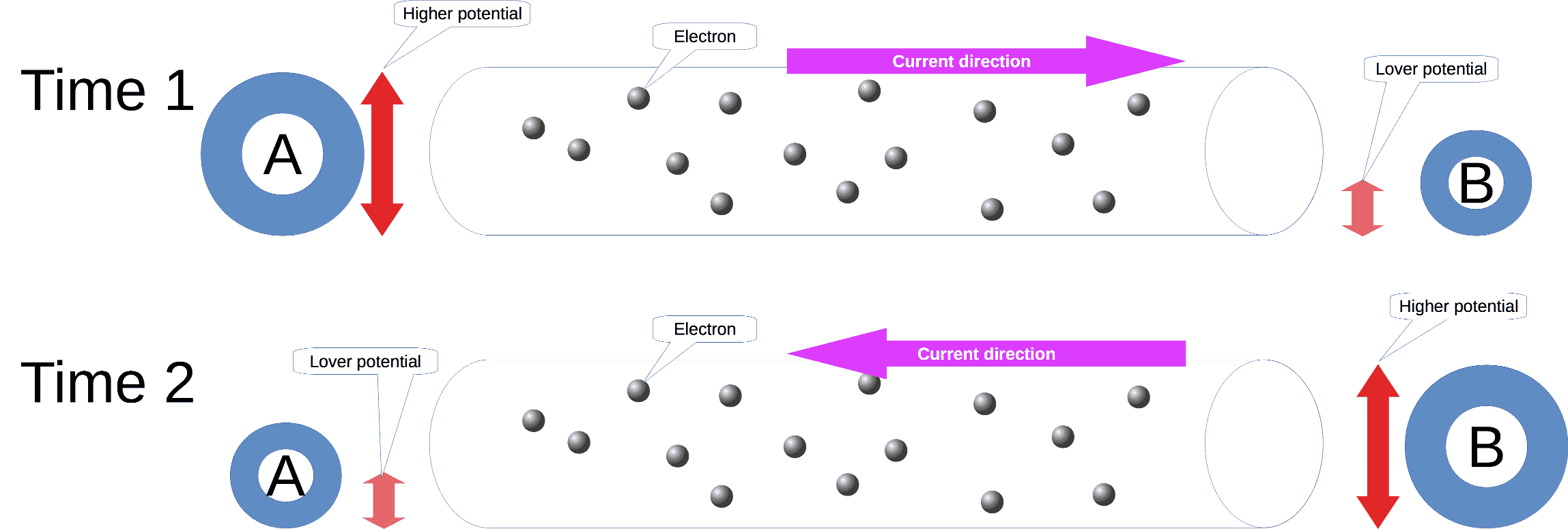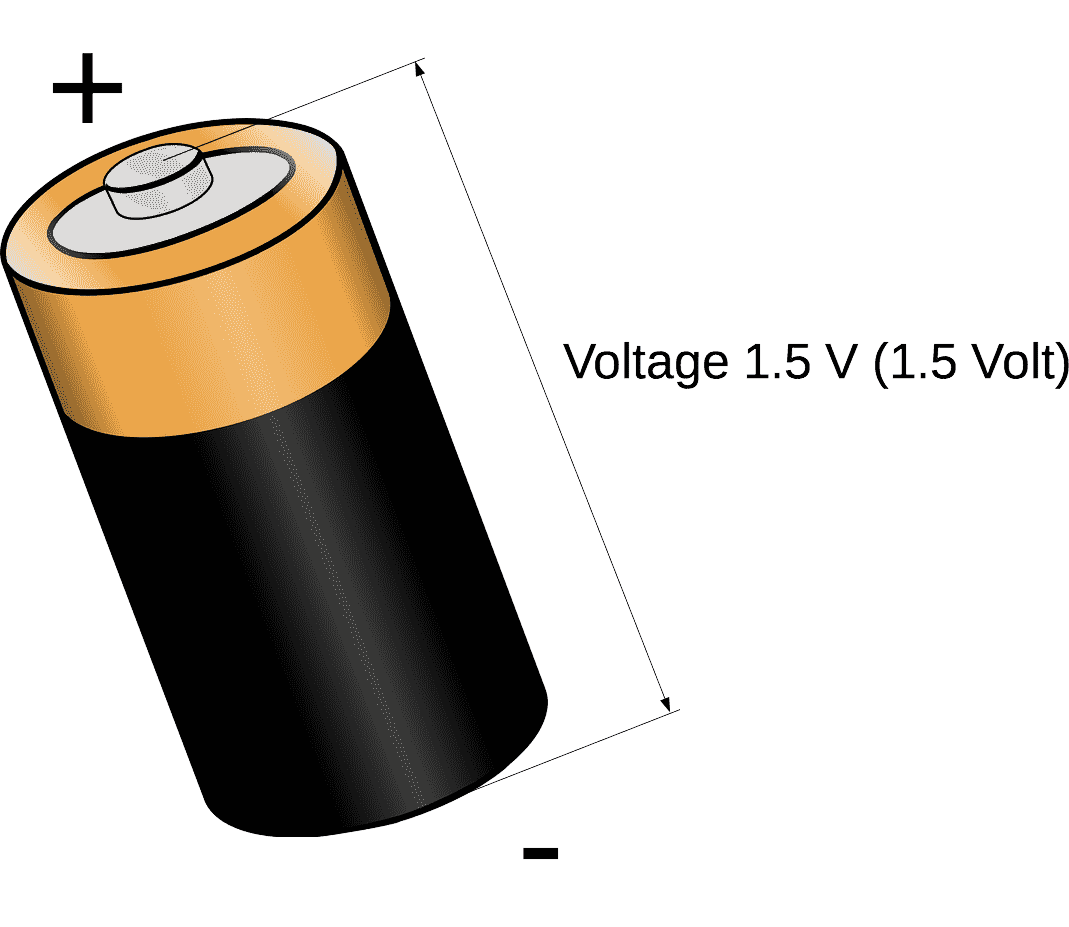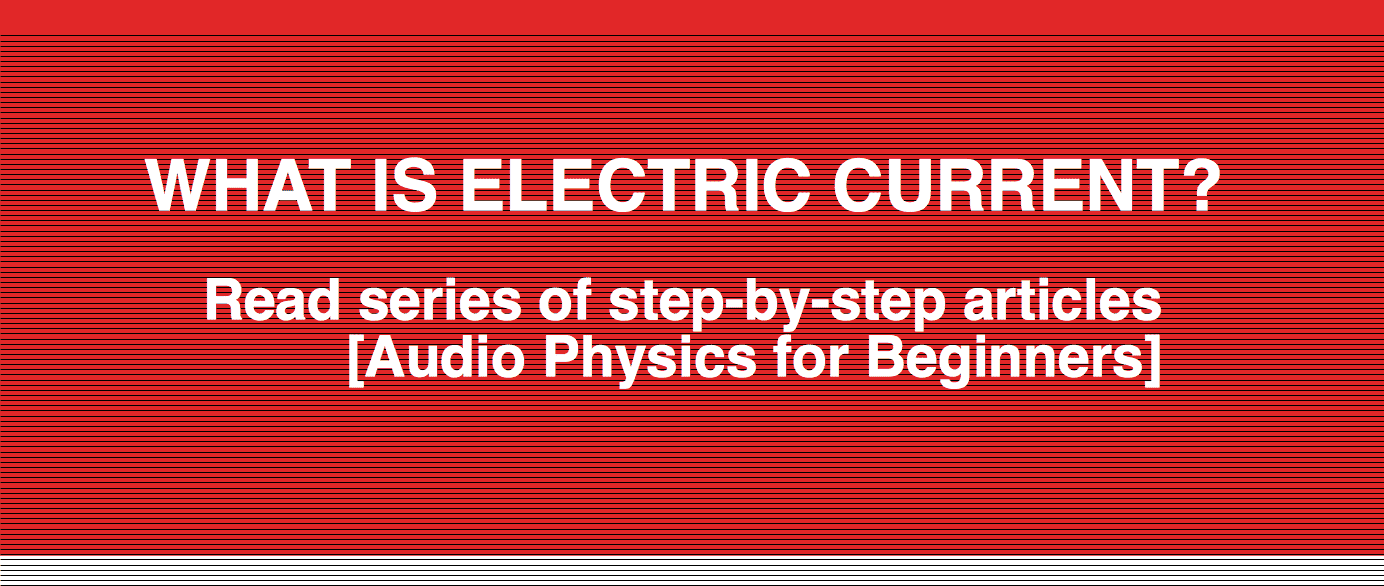
If you buy "AuI ConverteR PROduce-RD" (2023/12.x version) from 24 August 2023 to 24 October 2023, you will get free update to version 2024 (13.x) after its release.
Audio Basis - articles about audio
In the previous article, we considered what is voltage. Voltage, electrical current and resistance are the main basics of electricity. Today we consider the current in the context of the physics of audio. Keep reading...
What is electrical current
By the existing theory, electrical current is a movement of electrons or charged particles.
Voltage is a difference between electrical field potentials. It creates force, that moves charged particles from a point with a higher potential to a point with a lower one.
Electrons move through wires like a pipe.
Let’s imagine a cross-section (ring) inside the pipe as shown in the picture.
What is amperage of the electric current

The ring is infinitely thin.
Back to topWhat is amperage in simple terms?
Amperage, in the first approach, is the number of electrons that pass thru the ring per second.
The number of electrons is called an electrical charge.
Amperage = Charge per second
The amperage is denoted by I letter.
Back to top
Direct current
Direct current is current in a single direction. Like one the considered above.
Back to top
Alternating current
Voltage in a point may be changed. Let's imagine 2 points A and B.
At the current moment, point A has a higher electrical potential than point B.
Electrons move from point A with higher potential to point B with lower potential.
In the next time moment, point B has a higher potential than point A.
Electrons move in the opposite direction from point B with higher potential to point A with lower potential.
It is an alternating current.
Alternating current

Let's pay attention to potentials. There is one subtle detail.
At the battery, we can see 2 contacts "+" and "-". At the battery's body, we can read 1.5 V.
It is mean, that the voltage (difference of electrical contact potentials) between "+" and "-" is 1.5 Volt.
Voltage (potential difference)
of electrical battery

Mathematically potential "+" (positive potential) is more than "-" (negative). And electrons should move from the higher potential to the lower one: from "+" to "-".
However, electrons are negatively charged particles. So in reality, they move from "-" to "+". It is a reason why negative contact should be disconnected when an electrical device is turned off.
But when we learn electrical schemes, we consider "virtual" positive particles, that move from "+" to "-".
Therefore, we need to follow context when we discuss the electric current direction.
Back to topFrequently Asked Questions
What does amperage mean in electricity?
Amperage is a current strength. It is measured in Ampers. read more...
In the next article we will look in details how voltage and current are bound.
< Electric voltage Electrical Resistance >
Back to top
